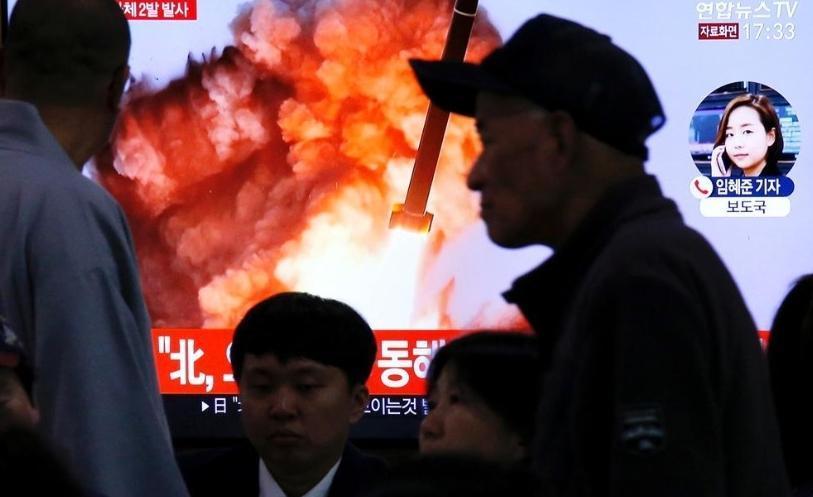
North Korea fired two projectiles, which Japanese authorities said appeared to be ballistic missiles, into the sea between the Korean peninsula and Japan on Oct. 31, according to the Japanese coast guard and South Korea’s military.
The first of two “unidentified projectiles” was fired on Oct. 30 at 4:35 p.m. local time from South Phyongan Province, in the center of the country, South Korea’s Joint Chiefs of Staff (JCS) said in a series of statements. A second projectile was detected at 4:38 p.m.
The projectiles traveled an estimated 370 kilometers (230 miles) and reached an altitude of 90 kilometers (56 miles), the JCS said, calling them “short range”.
Japanese authorities said they had landed outside Japan’s Exclusive Economic Zone (EEZ), which extends 200 nautical miles (370 kilometers) from land.
“Objects that appeared to be ballistic missiles were launched from North Korea,” Japan’s defense ministry said in a statement. “They did not land within our territory.”
The American airbase at Misawa, 700 miles (1,127 km) north of Tokyo, posted a “real-world missile alert” and urged personnel to seek shelter, before later issuing an “all clear”.
The second launch timing was a departure from this year’s string of tests, which usually took place around dawn.
It also occurred on the day that South Korean President Moon Jae-in attended the funeral of his mother, who died on Oct. 29.
In a message delivered via the border village of Panmunjom late on Oct. 30, North Korean leader Kim Jong Un had expressed “deep condolences” and “consolation” over Moon’s loss, Moon’s office said on Oct. 31.
On Oct. 30, South Korea’s Yonhap news agency cited an unnamed military source who said that movements of transporter erector launchers (TEL), used to fire missiles, had been detected in North Korea.
South Korea’s National Security Council held an emergency meeting after the launch on Oct. 31, and expressed its concern about what it called “short-range projectiles.
“Our military is maintaining a readiness posture while tracking and monitoring related developments in preparation for another launch,” the JCS said in a statement after the launches on Oct. 31.
The JCS called on North Korea to stop the launches because they were “unhelpful” for reducing tensions on the peninsula.
Kim Dong-yup, a former navy officer who teaches at Seoul’s Kyungnam University, said the launches could be a so-called “running test fire” of a recently developed multiple-rocket system, with the aim of fine-tuning the system for full production.
Rising tensions
Relations between the two Koreas have cooled since a flurry of personal meetings between Moon and Kim last year, and denuclearization negotiations between North Korea and the United States appear stalled.
On Oct. 27, North Korea said there had been no progress in North Korea-United States relations.
Kim has set an end-of-the-year deadline for denuclearization talks with Washington, and in a statement a senior North Korean official said it would be a mistake for the United States to ignore that deadline.
North Korea has tested several new missile designs this year, including a new submarine-launched ballistic missile fired from a platform in the sea on Oct. 2.
It says the missiles are necessary to defend against new warplanes and weapons acquired by South Korea, including the advanced F-35 stealth fighter jet.
North Korea has also accused the United States and South Korea of continuing hostile policies, including military drills.
On Oct. 28, South Korea began its annual Hoguk military exercises, which it says are for self-defense.
North Korean state media, however, blasted the drill as practice for invading the North, and said “South Korean military warmongers are driving the situation into an extreme one.”
American officials have played down recent tests, saying they were short-range missiles.
Experts have said several of the new missiles tested this year by North Korea are designed to potentially evade missile defense systems deployed in South Korea and Japan.